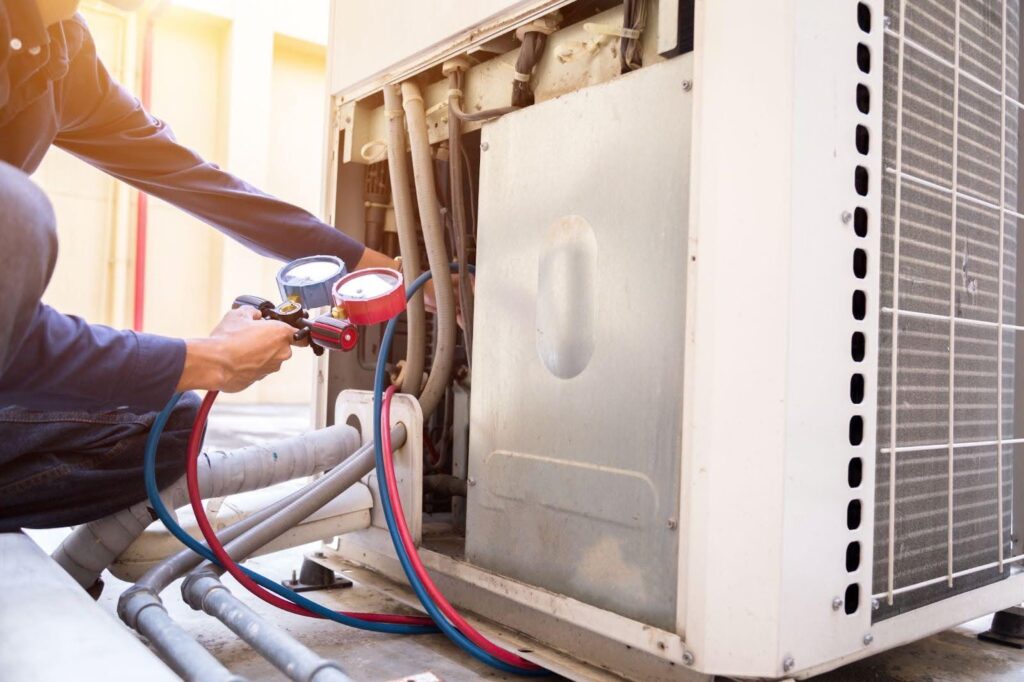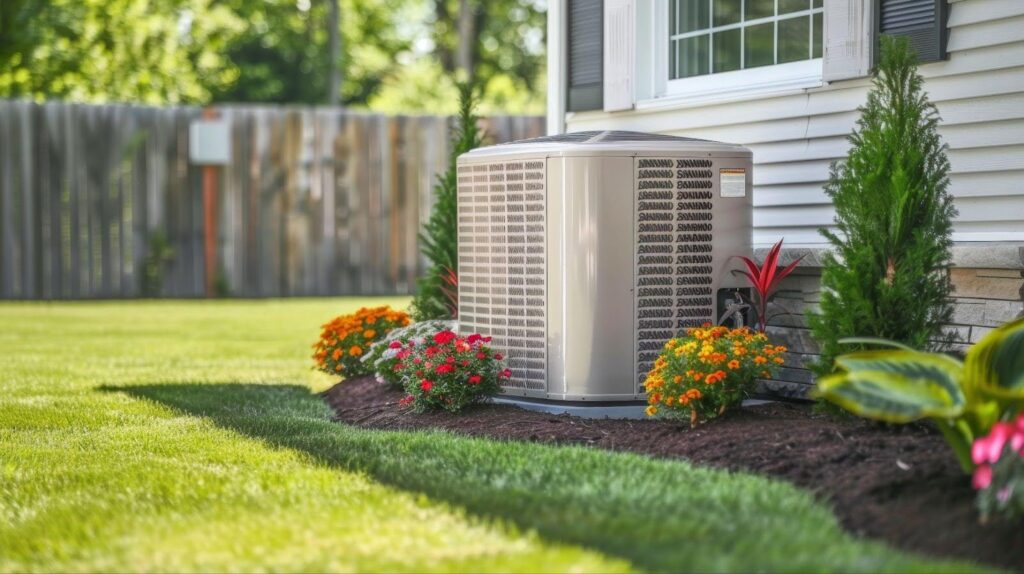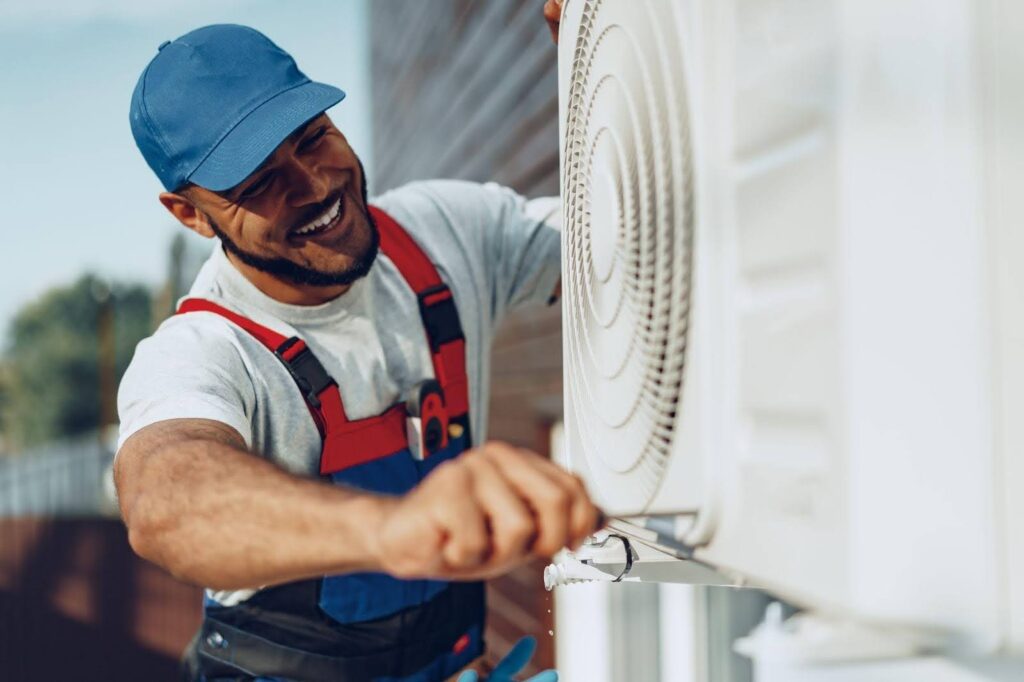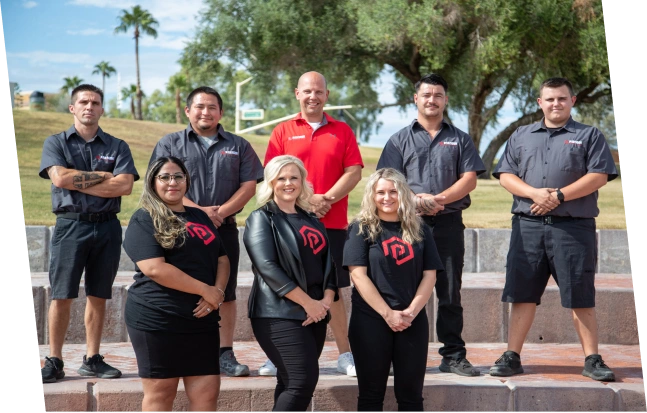Installing a new air conditioning system is a major investment, and understanding the true cost helps you plan with confidence. Whether you’re upgrading an aging unit or installing AC in a new home, knowing what drives pricing can help you avoid unexpected expenses and make smarter choices.
Many homeowners worry about fluctuating price ranges, hidden fees, and whether the system they choose will deliver long-term value. With so many variables — from equipment type to labor rates — it’s easy to feel overwhelmed or unsure of where your money is going.
This blog breaks down what you can expect when budgeting for AC installation. You’ll learn what factors influence cost, which additional expenses to consider, and how to choose a contractor who delivers lasting comfort without overcharging. If you want a cooling system that fits your home, your needs, and your budget, this guide will help you get there.
What influences the cost of AC installation?
The cost to install a new air conditioning system varies widely based on several important factors. Understanding what influences the total price helps you plan ahead and choose a system that fits your home and budget.
System type plays a big role in the final cost
Central air conditioning, ductless mini-splits, and heat pumps all come with different price points, installation methods, and performance benefits. Central AC systems typically cost more upfront but cool larger spaces efficiently. Ductless mini-splits work well for smaller homes or room-specific cooling. Heat pumps offer both heating and cooling, which can reduce long-term energy use.
The size and cooling capacity of the unit also matter
Measured in tons or BTUs, system size should match your home’s square footage, layout, and insulation. An oversized unit wastes energy, while an undersized one struggles to maintain comfort. Proper sizing is essential for efficiency and performance.
Brand reputation and energy efficiency impact both cost and value
High-efficiency models with SEER2 ratings or ENERGY STAR certification may cost more upfront but offer lower energy bills over time. Some brands also include better warranties and advanced features that increase long-term value.
Your home’s layout and ductwork condition affect installation time and materials
Older homes may need duct modifications or repairs to accommodate a new system. In homes without ductwork, installing central AC becomes more complex and labor-intensive.
Labor and installation complexity add to the total cost
Difficult access, multi-zone systems, or custom installations require more time and specialized expertise, which increases labor charges. A professional, well-executed installation ensures your system runs safely and efficiently.
Local regulations and permit requirements may also influence pricing
Depending on where you live, you may need to pay for permits, inspections, or additional compliance work. Regional cost-of-living differences and seasonal demand can further impact labor rates.
When you understand these variables, you’ll be able to make more informed decisions and avoid unexpected expenses. The right system, installed correctly, keeps your home comfortable and energy efficient for years to come.
The average cost range you can expect
When planning for a new AC system, knowing the average cost range helps you budget more effectively and avoid surprises. Installation prices vary based on location, system type, and project complexity, but a few general benchmarks provide a solid starting point.
Nationally, most homeowners spend between $4,500 and $12,000 for a complete air conditioning installation. In some areas, especially where labor and permit costs run higher, prices may exceed that range.
In Utah and surrounding regions, homeowners typically see costs that align with the national average, though local rates and seasonal demand can influence final pricing.
You’ll usually find systems grouped into three price tiers:
- Basic systems range from $4,500 to $6,500. These setups offer standard efficiency and fewer features but still provide reliable cooling for smaller homes or single zones.
- Mid-range systems fall between $6,500 and $9,000. These units usually include better SEER2 ratings, quieter operation, and smart thermostat compatibility.
- Premium systems start around $9,000 and can reach $12,000 or more. These options deliver advanced features like variable-speed compressors, multi-zone coverage, and the highest energy efficiency ratings available.
Most installation costs include the air conditioning unit, labor, refrigerant, thermostat installation, removal of the old system, and basic ductwork adjustments. Some contractors also provide a warranty and a follow-up inspection to ensure proper performance.
Keep in mind that every home is different. Factors like square footage, duct condition, and the type of AC system you choose all impact the final price. A personalized quote from a trusted HVAC professional will give you the most accurate picture.
Additional costs to consider
When installing a new air conditioning system, the base price often covers the essentials, but several additional expenses can affect the final total. Factoring in these potential costs helps you create a more accurate budget and avoid last-minute surprises.
Ductwork upgrades
These are a common add-on, especially in older homes. Leaky, undersized, or poorly insulated ducts reduce system efficiency and indoor comfort. If your ducts need sealing, resizing, or full replacement, expect to pay extra for materials and labor. Proper ductwork ensures even cooling, better airflow, and lower energy bills.
Electrical panel modifications
Modification to your electrical panel may also be necessary. Newer AC systems sometimes require more power or updated safety features that older electrical panels cannot support. If your panel lacks capacity or shows signs of age, an upgrade will add to the overall installation cost but will also improve safety and code compliance.
Thermostat replacement or upgrades
Another consideration is replacing or upgrading your thermostat. If your current thermostat is not compatible with modern, high-efficiency systems, your installer may recommend a new programmable or smart thermostat. While this adds to the upfront investment, smart thermostats offer better control, energy tracking, and long-term savings.
Old system removal and disposal fees
The cost may also increase your final bill. Many HVAC companies include this in their quote, but some charge separately to haul away and properly dispose of outdated equipment. Ask your contractor if this service comes standard or requires an additional fee.
Maintenance plans or extended warranties
These provide long-term value, especially if you want to protect your investment. While optional, these services offer scheduled tune-ups, priority service, and discounted repairs. Investing in ongoing maintenance can extend the life of your system and reduce repair costs down the road.
How to get an accurate estimate
Getting an accurate estimate for AC installation starts with a professional, in-home evaluation. Every home is different, and a quick phone quote or online calculator can’t account for the unique details that affect installation time, cost, and long-term performance.
A trusted contractor should begin by inspecting your home’s layout, insulation, existing ductwork, electrical system, and square footage. They should also evaluate your current HVAC setup to determine what needs to be replaced, upgraded, or reconfigured. This level of detail helps ensure the new system is properly sized and matched to your home’s cooling needs.
Always request multiple estimates before making a decision. Comparing quotes helps you understand industry standards, spot overpriced services, and identify added value. Look at more than the bottom line — review the equipment being offered, what’s included in the installation, and the quality of warranties or service guarantees.
Watch for pricing red flags. A significantly lower estimate might leave out important services or use lower-quality materials. On the other hand, vague or overly complex proposals can hide hidden fees. If a contractor pressures you to decide quickly, offers no written breakdown, or avoids answering questions, consider it a warning sign.
Accurate estimates come from professionals who take the time to assess your home, explain your options, and offer transparent pricing. When you know what to expect, you can move forward with confidence and peace of mind.

Ways to save on AC installation
Installing a new air conditioning system can feel like a major investment, but several smart strategies may help you reduce upfront costs and unlock long-term savings. By taking advantage of rebates, tax credits, and energy-efficient technology, you can improve home comfort without straining your budget.
Seasonal promotions or rebates
Look for seasonal promotions or rebates offered by HVAC manufacturers or local utility companies. These limited-time offers often provide discounts on high-efficiency units, bundle deals with thermostats, or cash-back incentives for replacing older systems. Timing your installation around these promotions can lead to significant savings.
Energy efficiency tax credits
Claim energy efficiency tax credits when installing qualifying systems. Many ENERGY STAR®-certified units meet federal or state criteria for residential energy credits. These tax benefits may help offset the cost of installation while rewarding your choice to invest in cleaner, more efficient technology.
Financing options
Many companies offer flexible payment plans that allow you to spread out the cost of installation over time. Financing makes it easier to afford a higher-efficiency system that saves you money in the long run.
Prioritize long-term value through energy-efficient systems. While these models may cost more upfront, they consume less energy and reduce monthly utility bills. Over time, the savings add up, often paying for the initial investment within a few years. Efficient systems also tend to last longer and require fewer repairs, boosting the overall return on investment.
By combining rebates, tax incentives, and smart financing, you can make a cost-effective upgrade that delivers year-round comfort and long-term benefits. With the right planning, installing a new AC system becomes a smart financial move and a home improvement.
Why choosing the right contractor matters
The contractor you choose plays a major role in the success of your AC installation. Even the best equipment will underperform if installed incorrectly. A qualified, experienced professional ensures your system operates efficiently, safely, and exactly as intended.
Experienced contractors know how to size your system correctly
Proper sizing is not a guess — it requires evaluating your home’s square footage, insulation, layout, and heat load. An oversized or undersized system wastes energy and struggles to maintain comfort. A skilled technician will recommend the right unit to match your specific needs, avoiding performance issues down the line.
Always choose a licensed, insured, and certified contractor
Certification from trusted organizations, like NATE (North American Technician Excellence), signals advanced training and industry knowledge. Licensing protects you legally, and insurance provides peace of mind in case of accidents or damage during the job.
Transparent pricing builds trust
The right contractor provides a clear, detailed quote that explains what’s included and why. They answer your questions without pressure and focus on solutions that make sense for your home, not upselling you on features you don’t need. This customer-focused approach leads to better communication, fewer surprises, and a smoother experience.
Reliable contractors stand behind their work
They register warranties, honor service guarantees, and remain available for follow-up questions or future maintenance. Choosing the right professional sets you up for long-term comfort and confidence in your investment.
When it comes to AC installation, the contractor you trust makes all the difference. With the right partner, you get expert guidance, quality workmanship, and a system that keeps your home cool and efficient for years to come.

Set your home up for success with Paragon Service Pros
When you’re ready to upgrade or replace your system, choose a team that puts your needs first. Paragon Service Pros delivers expert installation, honest pricing, and dependable service every step of the way. Our licensed professionals guide you through the process with clear communication, top-quality equipment, and a commitment to getting the job done right.
Schedule your in-home estimate when you contact Paragon Service Pros today and experience the difference that comes from working with HVAC experts who care.



